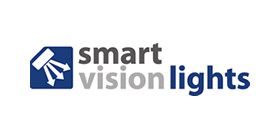How do you monitor the topography of micro parts when the demands of efficient production require short cycle times and high quality? 3D-Shape GmbH performs complex surface measurements using the principle of white light interferometry, advanced sensors, 3D image processing and powerful camera technology from Mikrotron GmbH.
Fast three-dimensional image processing technologies are becoming more and more important for quality control of complicated components. They are now superior to tactile measurement systems in speed, flexibility, precision and analytical possibilities. In keeping with the adage “a picture is worth a thousand words,” image analysis allows you to discover complex connections and many object parameters at a single glance.
A few years ago, high precision measurements within industrial production lines were unimaginable. Today, reliable quality control with measurement uncertainties of only a few nanometers are possible even with short cycle times. This is true for applications in the electronics, aircraft and automotive industries through to the mold construction of micro parts with highest precision.
The Measuring Principle of White Light Interferometry
Through rapid innovation cycles in processor and camera technology as well as in precision optics and image processing software, interferometry is increasingly coming into focus. With white light interferometry, the topographies of both rough and smooth objects can be measured and captured in a very precise way. Simply put, the measurement subject and a reference mirror are illuminated by a light source. This is separated into two parts by a semi-transparent mirror (beam splitter).
As the process continues, this results in brightness variations, which are recorded on the image sensor of the camera. These are analyzed by special software and each pixel is assigned a height value. This then creates a highly differentiated profile height in the nanometer range. If the process is carried out at various layers, complex structures are recorded in their full height.
Performing High-Speed Measurements with the Highest Precision
Due to its compact design, the Korad3D system can be directly integrated into the production line.
The KORAD3D sensor product family, produced by 3D-Shape GmbH, utilizes the principle of white light interferometry. Their ability to measure fields of 0.24 × 0.18 mm at minimum to 50 × 50 mm at maximum, means they are compact, can be integrated into the production line systems and cover a wide range of applications. They determine flatness and roughness on sealing surfaces, provide 3D imaging of milling and drilling tools, give information on wear on cutting inserts and check the period length and step height of the smallest contacts in electronic devices. The achievable accuracy is directly dependent on the required measurement field size, the optics used and the camera resolution.
The most important factor influencing the measurement accuracy and measurement speed of a KORAD3D system is the performance of the built-in camera. Larger measurement fields are advantageous in ensuring the system can be used for a variety of applications. However, the greater the measurement field, the more inaccurate the measurement. A key requirement for the camera is therefore the megapixel resolution. This is, of course, in addition to other important aspects of image quality such as contrast and noise behavior and the sensitivity of the camera. At the same time, the camera must be able to deliver a high frame rate. In many applications, the entire structure is recorded layer-by-layer, and at very short cycle times within the production line. Doubling the measuring depth, however, also causes twice the measuring time. The resulting large amounts of data need to be addressed. This can only be achieved by a camera that captures and transfers images in real time.
Monitoring with KORAD3D in the µm Range
In order to continue processing the ball-grid arrays without errors, it is important to ensure that they are all placed with their top ends inside one area. The bumps in the arrays, arranged like a “nail board,” can be checked with the KORAD3D for different characteristics up to the µm range.
Every single contact pin in the ball-grid array is precisely checked in size and shape to the µm range. In just about one second, the topography of the entire group is captured.
Convincing on all Levels
When 3D-Shape were looking for a camera that meets all these requirements best, only a few were shortlisted. The Erlangen-based company operates along the frontier of the physically possible and therefore needed a camera with the latest technology. They got a crucial tip from a sensor manufacturer. According to the head of development, ultimately the Mikrotron EoSens® was the only camera that met all the requirements. Therefore, the company decided to equip the KORAD3D measuring systems family with this camera.
At a full-screen resolution of 1,280 × 1,024 pixels, the camera delivers up to 500 images per second via the high performance base/full-camera link (160/700 MB/second) interface. This specification convinced the Erlangen-based company. So they could monitor the as yet unfitted circuit boards at a frame rate of 180 fps (frames per second) for a customer in the electronics industry. But even higher frame rates of up to 500 fps are used in applications.
Another important argument for the EoSens® was its outstanding light sensitivity of 2,500 ASA. It is based among other things on the large area of a single pixel of 14 × 14 µm and the high pixel fill factor of 40%. The investment required for lighting systems was thus reduced and a higher range of brightness and contrast for image processing could be set.
In addition to this there was the switchable exposure optimization. It adapts the usually linear image dynamics of the CMOS sensors to the nonlinear dynamics of the human eye at two freely selectable levels. The bright areas are thereby suppressed and details can be extrapolated even with extreme light-dark differences in all areas. In the most demanding image processing tasks, this is a great advantage.
Given the cycle times the KORAD3D system has to maintain, each contribution to the acceleration of the data processing is important. This includes the ROI function, which can be defined and customized freely to fit the size and location of individual tasks or the receptive field to be evaluated. The amounts of data are thus reduced and the analysis is accelerated. This simultaneously allows extremely increased frame rates. The built-in multiple ROI function allows the user to define up to three different image fields in the overall picture. 3D-Shape GmbH is not making use of this in current applications, but is already looking at interesting solutions applying this in future.
To keep the measurement accuracy of the topographies created by the KORAD3D system in a narrow range, a number of features of the imaging quality must work together to form a performance-boosting whole. The global shutter of the EoSens® completely freezes the captured frame and stores it in real time, while the next image is already being exposed. This provides images of dynamic processes free of distortion and smear effects. In addition to the C-Mount lens mount there is also the F-Mount option. The latter allows the operator to connect the camera and lens to a fixed calibrated unit, which increases the precision of the analysis. In addition to this range of outstanding performance data the compact design of the camera, which simplifies system integration, wins customers over.
To Know More About Mikrotron High Speed Camera in India, Contact Menzel Vision and Robotics Pvt Ltd at (+ 91) 22 35442505 or Email us at info@mvrpl.com
Source - mikrotron.de































